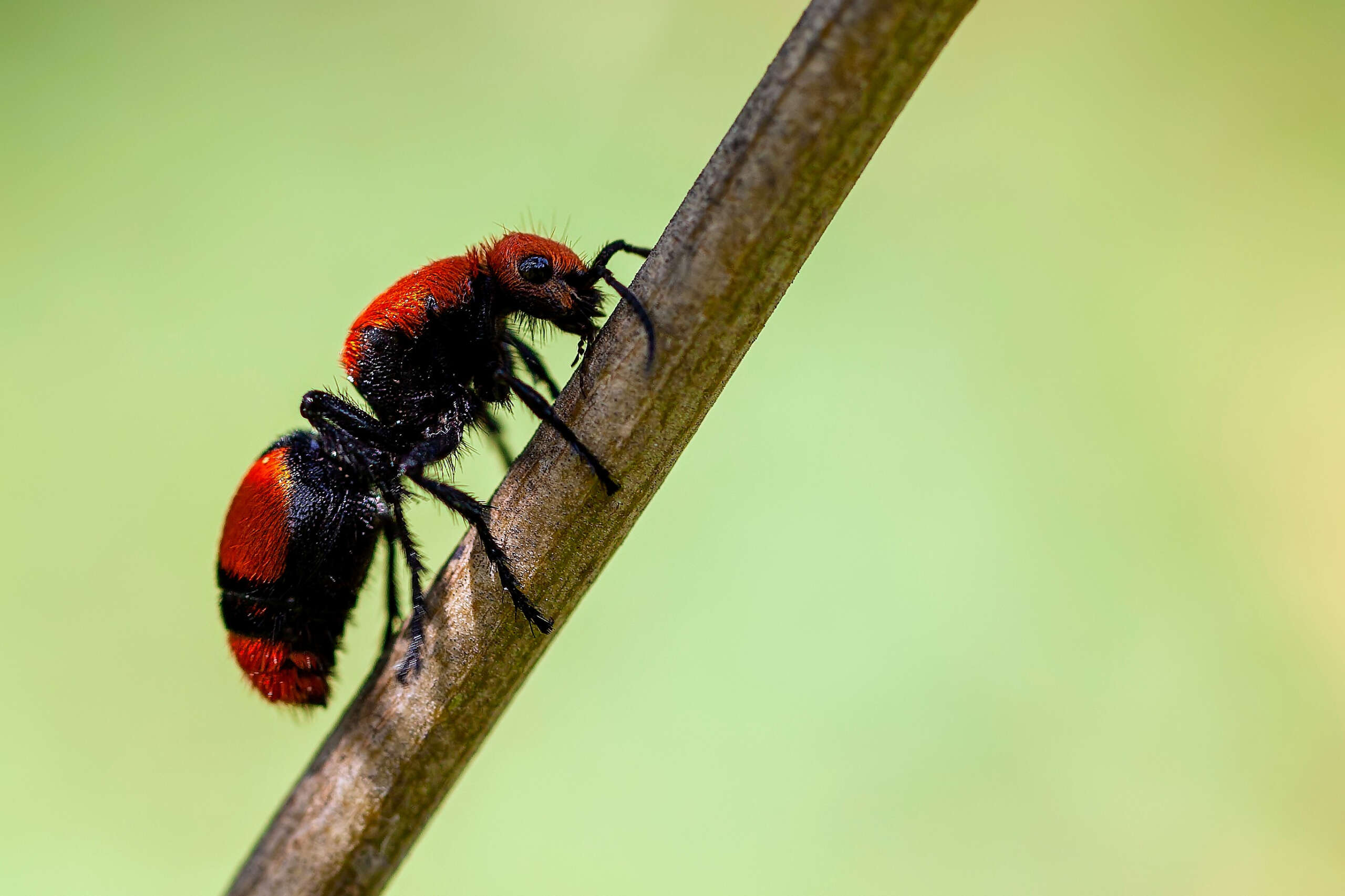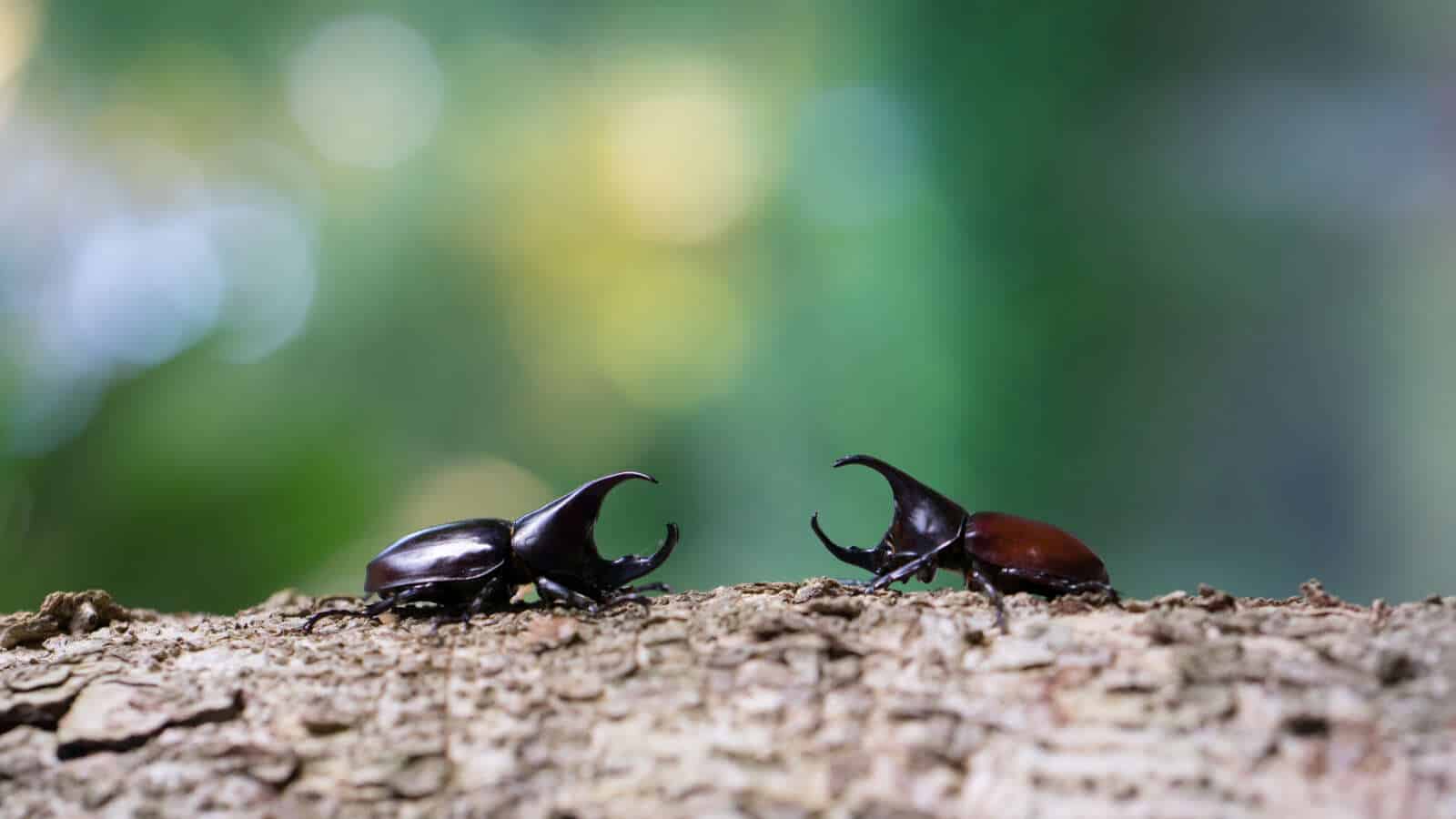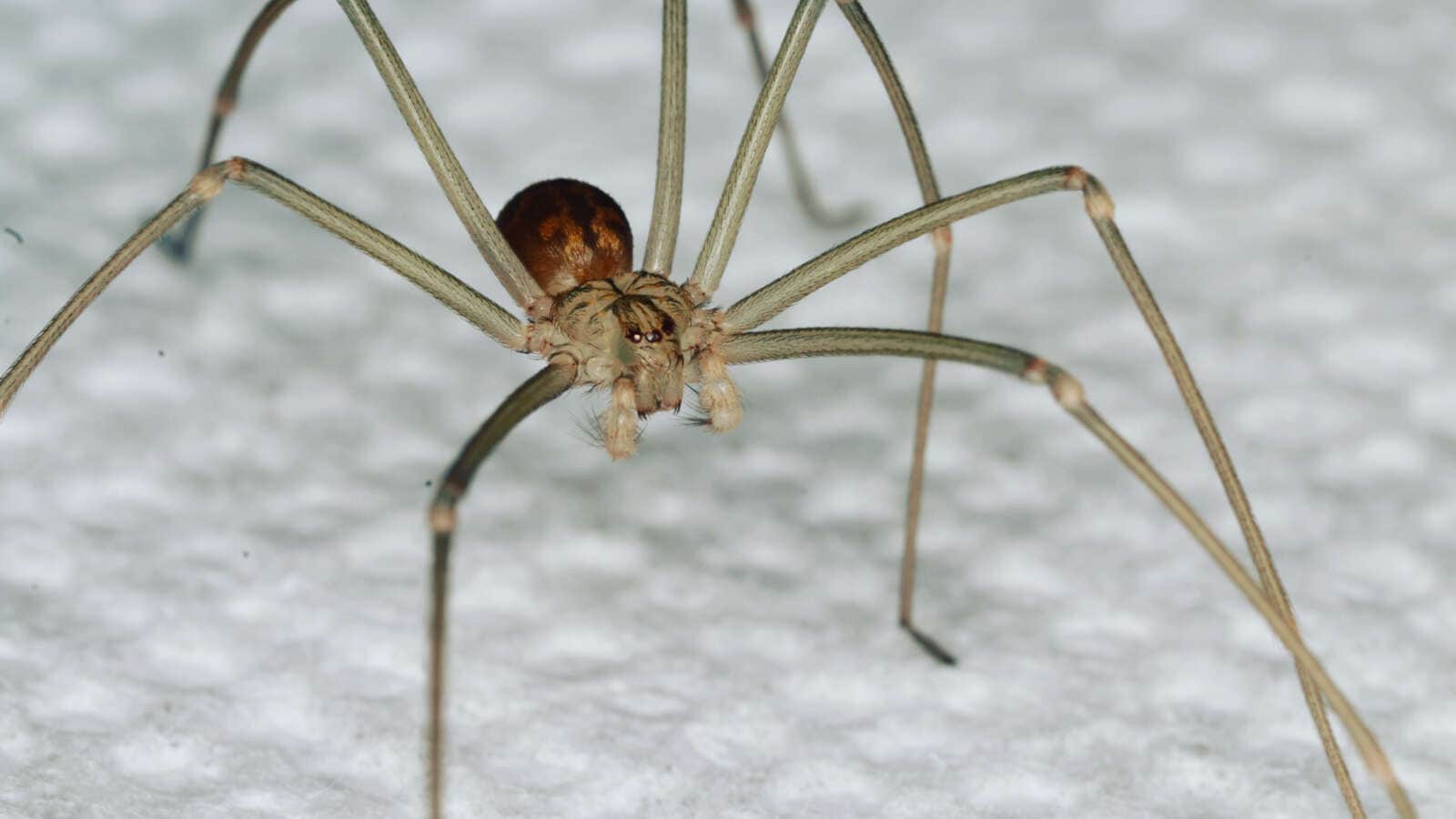Velvet Ants: Why These Wasps Are Adorable Nightmares
As a society, it feels like we’ve seen it all when it comes to ants. Whether they’re invading the boxes of sugary cereal that line our pantry shelves or marching in a determined line across the tiled floor, ants seem like a predictable pest. That’s why the velvet ant seems like the most unfamiliar ant ever — or is it? Turns out, this fuzzy insect isn’t even an ant at all! Let’s dive into the life of this strange wasp and why its stinger sounds like the stuff of nightmares.
The Basics
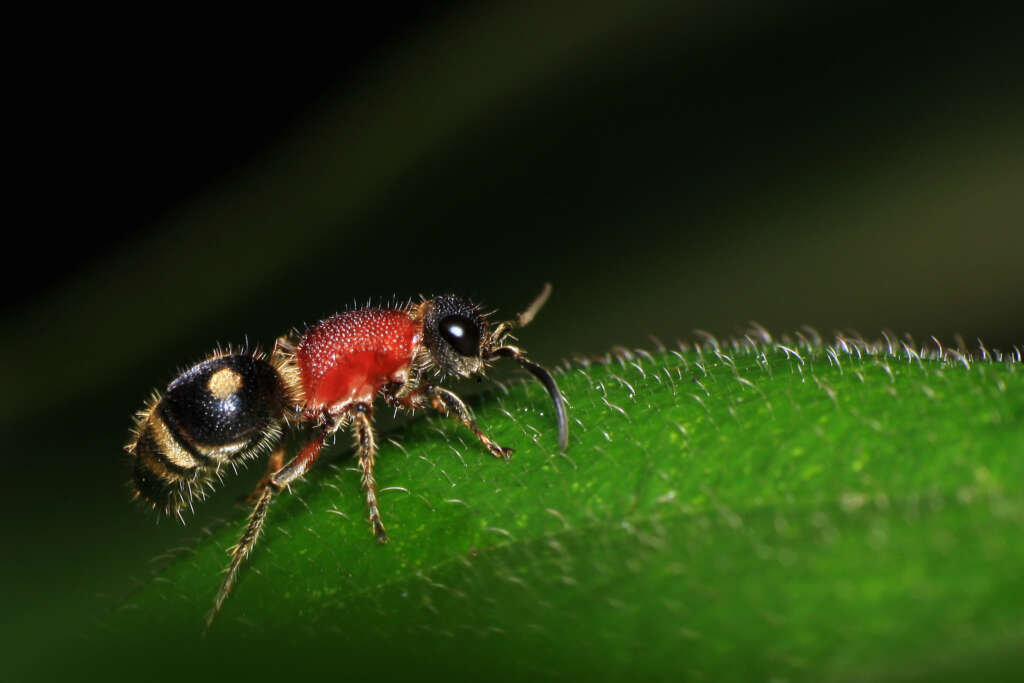
First, let’s backtrack a little. Velvet ants are indeed not actually ants. They are parasitic wasps, which means they lay their eggs in the nests of other insects in order to provide their offspring with an immediate food source. Like many insects, velvet ants are most active in the warmer months in dry, open areas.
Velvet ants have an interesting appearance because of their memorable features, including:
- Length ranging from 0.5 inches to 1.25 inches
- Black coloring with bright red, yellow, orange, or white fuzz
- 6 legs
- 2 antennae
- Tough exoskeleton
- Long stinger filled with venom
The easiest way to tell the difference between male and female velvet ants is their wing status. Males have wings and females don’t, so female velvet ants are the ones we see scurrying across the ground. Luckily for them, they are speedy runners and know how to get where they’re going in a hurry. This skill also protects the velvet ant from hungry predators who roam the dry areas that these pests prefer to invade.
When & Where
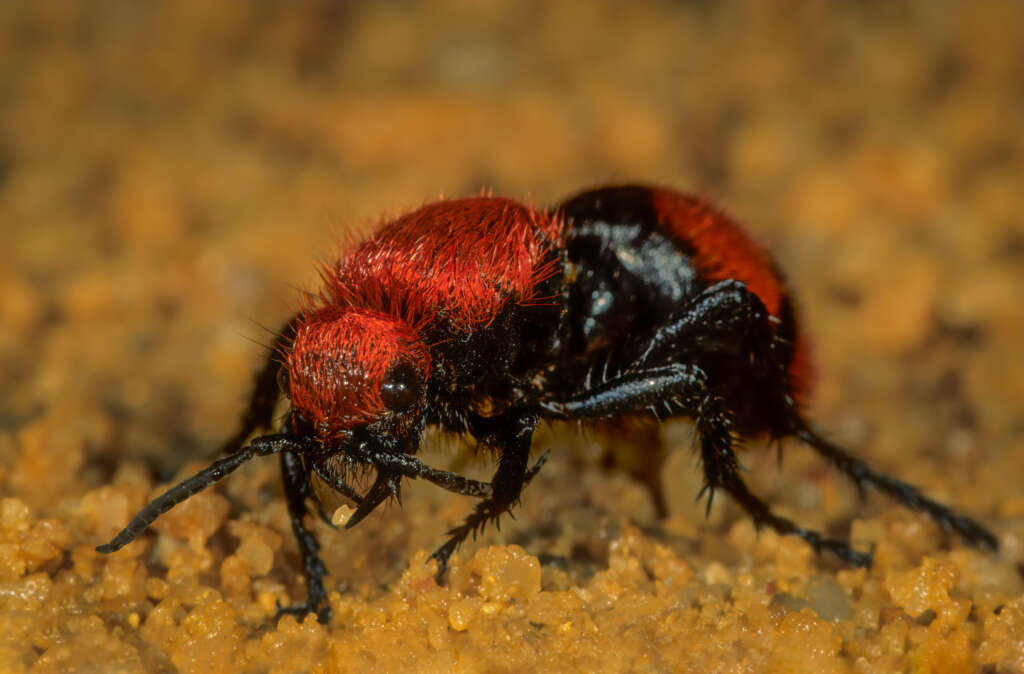
Most insects like temperate weather, but velvet ants need warm weather to thrive. The high temperatures give them enough energy to find food and reproduce. There are over 100 species of velvet ants in North America, and high concentrations of them live in the desert regions and dry, open areas. Velvet ants are found all over Missouri and south Illinois, as they generally favor Mediterranean climates and sunlit lawns. Surprisingly, they also favor the Pacific Northwest in the semiarid areas.
Since velvet ants are at their peak in the summer, they need shelter from the harsh sunlight. They spend most of their time in lawns and vegetated spaces because velvet ants are more likely to find nests to invade there. These wasps spend much of the day in dry soil to stay cool as they scavenge. At the warmest point of the day, velvet ants hide in plants and under natural debris (leaf litter, twigs, etc.) for protection. Although they’re found in the usual areas you might find a wasp colony, velvet ants act far differently from their brethren.
Typical Habits
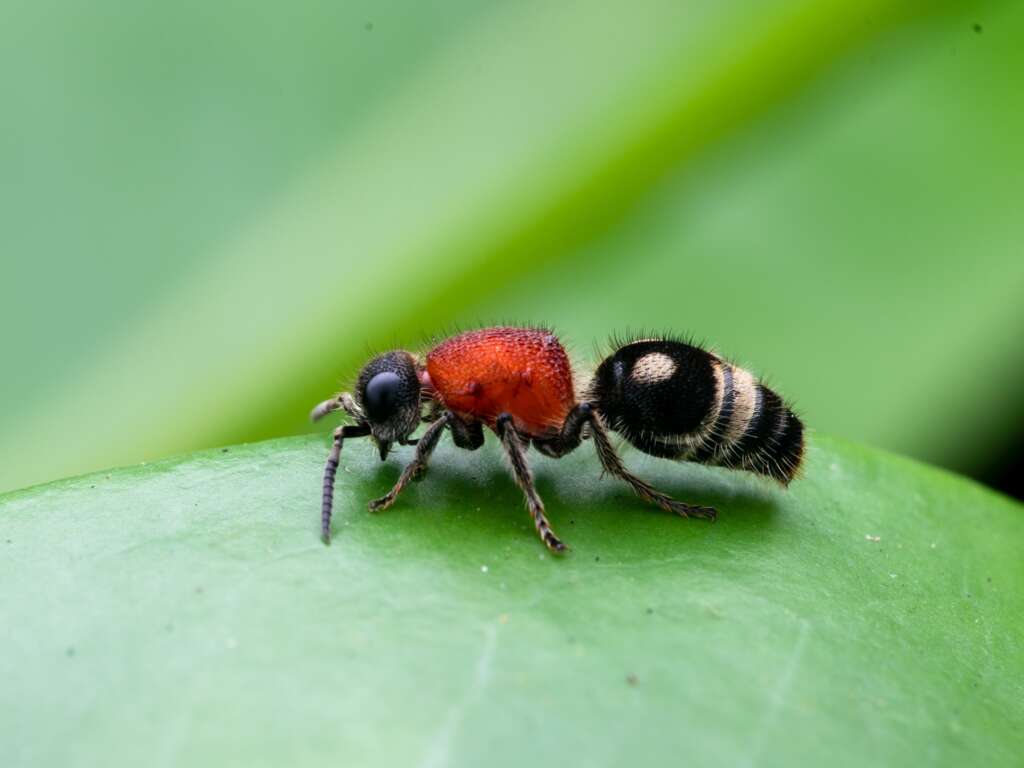
Velvet ants are similar to other parasitoid wasps in that they don’t travel in large groups. After mating, female wasps run across the ground in pursuit of a grounded insect nest. They use their impressive speed to their advantage while they sprint in erratic patterns to ward off predators. One wasp is much more vulnerable than a swarm of them! Most of the time, female velvet ants are in luck and don’t run into any hungry enemies on their way to a new nest. They have quite a few defense mechanisms for those unfortunate times that they are caught, but more on that later.
These wasps generally prefer to live in sandy dirt, but they also love flower gardens. The adults eat flower nectar and therefore need to be near flowers as much as possible. This naturally benefits them by placing the velvet ants close to the nests of other stinging pests, so female velvet ants can quickly find an egg-laying site when they need it. Some velvet ant species are nocturnal, which makes it even easier for them to invade an unsuspecting insect’s nest and lay their eggs.
Parasitic Parents
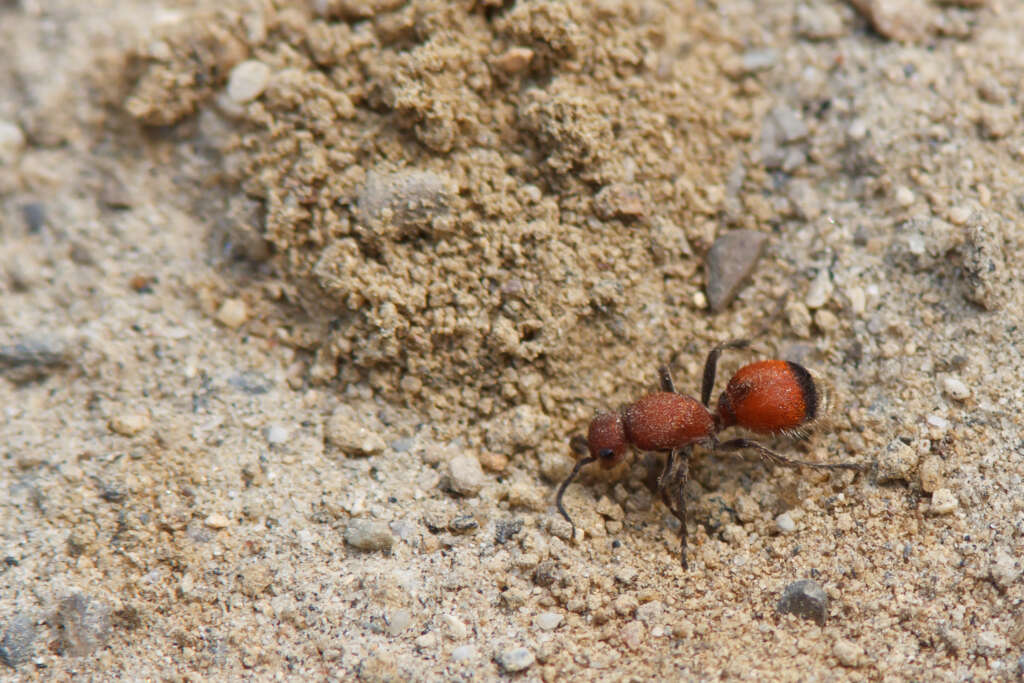
As we mentioned earlier, parasitoid wasps need insect hosts because their eggs can’t survive without an immediate food source. After mating with a male who found her, the female velvet ant searches for the nests of other insects — preferably bees and wasps — on the ground. Once she finds a nest, the female digs into the soil and breaks through the nest to place her own eggs on the resident larvae. Each velvet ant egg gets its very own pupa to devour once the egg hatches, which is quite the home invasion for the other pests!
After the young velvet ants hatch, they eat their host pupae. The mother is long gone because she needs to leave before any predators (or angry nest-owners) find her. Her original offspring grows quickly, often pupating right after eating their first meal. The young will even make a cocoon in its host’s pupal case for extra protection. Velvet ants usually overwinter as pupae to stay safe from the harsh weather, then emerge as adults and start their active lives in the spring.
Scary Stings
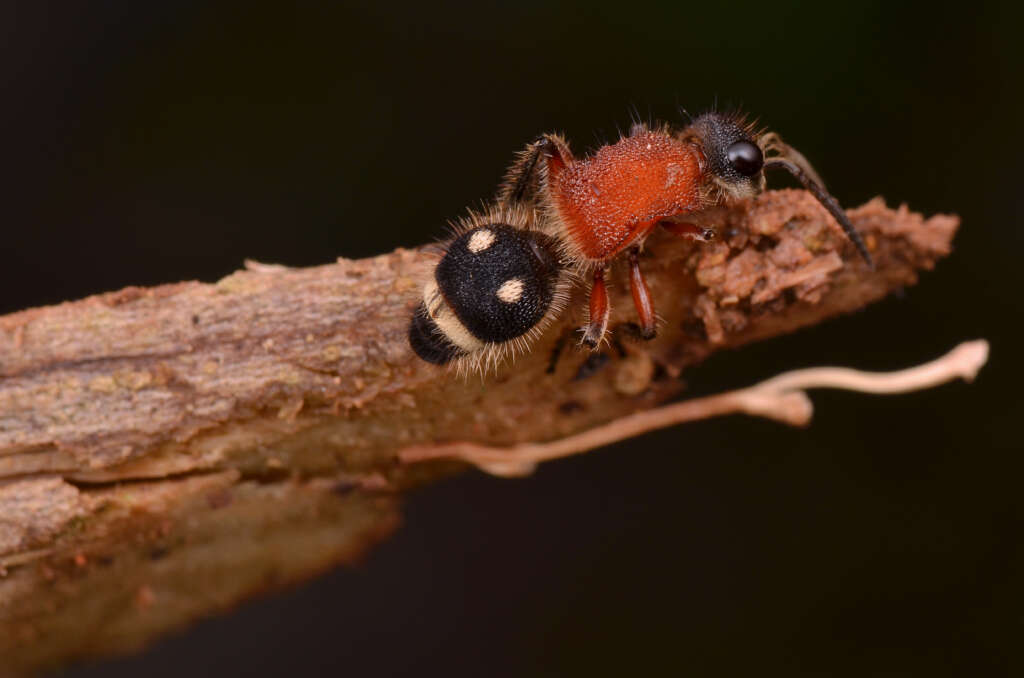
It’s time to address the most unhinged fact about velvet ants that really isn’t a fact at all. You may know these pests by their intense nickname: cow killers. It originated from the myth — yes, a myth — that their sting is painful enough to kill a cow. While it’s true that female velvet ants deliver a nasty sting, their venom actually isn’t that toxic compared to the venom of other stinging insects. To put it into perspective, a common velvet ant has a sting that is just as painful (or even less painful) than a honeybee sting.
There are two more velvet ant facts to note that will hopefully make you feel a bit better about their existence. First, only females are equipped with a venomous stinger. Males are essentially winged drones that just exist to mate and eat flower nectar. Secondly, velvet ants don’t sting unless they feel trapped.
They have a few tricks up their nonexistent sleeves when it comes to evading enemies:
- Colors: Their bright fuzz repels predators because bold colors on insects usually means they’re venomous or disgusting (or both).
- Scent: Velvet ants produce scent chemicals that prompt a predator to leave them alone, similar to a stink bug.
- Sound: These wasps make a squeaking sound as their own way of telling other critters to back off.
- Armor: Since they have tougher exoskeletons than usual, velvet ants aren’t easy to squish unless more pressure is applied.
Sting Solutions
If you accidentally touch a velvet ant and get stung, don’t panic! These wasps can sting us more than once, but they won’t do so if they can escape the situation. The next step is to see if there’s a black spot in the middle of the sting, as this is where the venom is injected. Scrape it off with a flat object, like a credit card or business card.
You may experience physical symptoms (similar to a bee sting) that include swelling, redness, and mild pain. These stings are typically treated at home with simple remedies to ease the pain for the rest of the day. Applying Benadryl and placing an ice pack on the site are the most effective for this purpose. But if your symptoms worsen or you are allergic to stinging insects, please seek medical attention immediately.
Pointe Protects Against Serious Stingers
Velvet ants don’t invade in huge groups, but most common stinging insects live in massive colonies. Paper wasps, hornets, yellow jackets, and ground bees invade our backyards to safely build their nests and scavenge for food. These infestations are pretty overwhelming to deal with on your own, which is why your local pest experts at Pointe Pest Control are always happy to help. We tackle each pest problem with a combination of thorough inspections, extensive pest knowledge, and environmentally-friendly treatments. We guarantee we will keep your home free of stinging pests all year long. For a free quote on the most reliable pest control services around, contact us today!
Citations
Osterloff, E. (n.d.). Velvet ants: Flamboyant and fuzzy with extreme PPE. Natural History Museum. Available at https://www.nhm.ac.uk/discover/velvet-ants-flamboyant-and-fuzzy-with-extreme-ppe.html (Accessed on February 26, 2024).
Velvet ant. (n.d.). San Francisco Zoo & Gardens. Retrieved February 26, 2024, from https://www.sfzoo.org/velvet-ant/
Velvet ants. (n.d.). Missouri Department of Conservation. Retrieved February 26, 2024, from https://mdc.mo.gov/discover-nature/field-guide/velvet-ants


